Fresh from one of the my favorite boutique labels, Twilight Time, comes the Blu-Ray of Jean Negulesco’s opulent, ridiculously overripe 1955 CinemaScope remake of his own 1939 The Rains Came, which I hadn’t seen since I was 13 or so — a highly enjoyable bad movie, which on some level must mean that it also qualifies as a good movie. Perhaps the most morally neutral adjective to be employed here is one of those used by Julie Kirgo, Twilight Time’s ever-industrious in-house scribe: “lurid”.
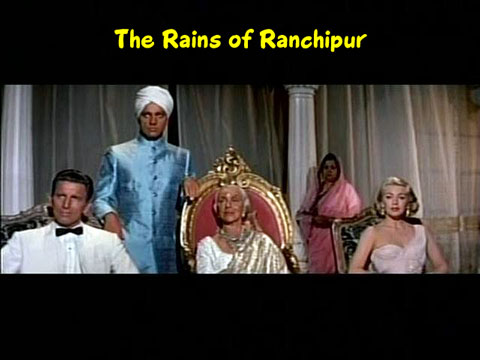

None of the characters here is ever quite believable — Lana Turner as wealthy, aristocratic maneater Lady Esketh, Michael Rennie as her self-hating cuckold husband, Richard Burton as the innocent and idealist doctor and one-time Untouchable who falls heavily for Lady Esketh, quotes Eliot and Shakespeare, and spouts profound aphorisms, Eugenie Leontovich as the urbane Maharani who raised the doctor, Fred MacMurray as a well-to-do and secretly virtuous alcoholic, Joan Caulfield as the latter’s oversheltered protégé — but every one of them is, shall we say, exceptionally vivid, and the performances are all much better than they need to be. Similarly, the special effects trotted out for the title catastrophe are worthy of Cecil B. De Mille, with Lahore, Pakistan and (I presume) various Fox soundstages standing in for Ranchipur as fearlessly as the mesmerizing White Russian refugee Leontovich pretends to be Indian, or the no less self-validating Lana Turner pretends to be candid. Read more
This review appeared originally in Cineaste, Fall 2001. — J.R.
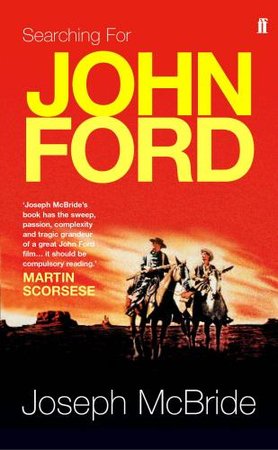
Searching for John Ford
by Joseph McBride. New York: St. Martin’s Press, 2001. 838 pp., illus, Hardcover: $40.00
Only sixty pages longer than his other lengthy biography, Frank Capra: The Catastrophe of Success (1992), Joseph McBride’s Searching For John Ford is, in fact, a very different sort of book, and not only because the size and importance of Ford’s work is considerably greater. The earlier volume — a devastating act of demystification that sought to dismantle not only a populist hero, but also the national mythology that virtually willed him into existence — made the value of Capra’s films appear almost secondary. It was suggested, moreover, by Gilberto Perez that McBride even seemed to gloat over the failure of Capra’s farm — that the author’s apparent animus toward his subject spilled over into his cultural critique. For me, the self-deluding aspects of Capracorn — in contradistinction to the erotic splendors of Capra’s best Thirties work — made such a relentless assault on the mythology both useful and necessary.
One might argue that Ford’s career, by contrast, is much too varied and complex to suit any such monolithic agenda, moral or otherwise. Read more
From the Chicago Reader (July 20, 1990). — J.R.
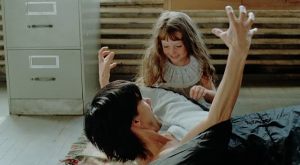
JESUS OF MONTREAL
*** (A must-see)
Directed and written by Denys Arcand
With Lothaire Bluteau, Catherine Wilkening, Johanne-Marie Tremblay, Remy Girard, Robert Lepage, Gilles Pelletier, Yves Jacques, and Arcand.
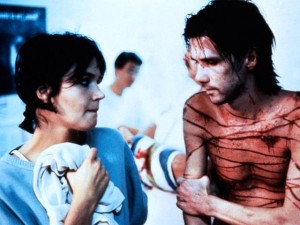
It must have been about 30 years ago that I saw Jules Dassin’s He Who Must Die, a popular art-house movie at the time and one of my first foreign films. Dassin, an American expatriate chased to Europe by the Hollywood blacklist, was a highly skilled film noir director whose best efforts included The Naked City, Thieves’ Highway, and Night and the City. He Who Must Die, set on Crete in 1921, was a French picture based on Nikos Kazantzakis’s novel The Greek Passion, concerning the performers in a passion play whose theatrical roles take over their real lives as they suffer from Turkish oppression; the theme was that if Christ came back today, he would be crucified all over again.


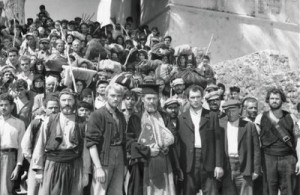
I was a teenager at the time, and being none too versed in what was considered sophisticated in film in 1959, I was moved to tears. This was at a time when the French New Wave had barely made a ripple in the American consciousness, and shortly before Dassin’s film was ridiculed by critics I admired, like Pauline Kael and Dwight Macdonald, as the acme of arty pretension. Read more
From the Chicago Reader (July 1, 1994). — J.R.
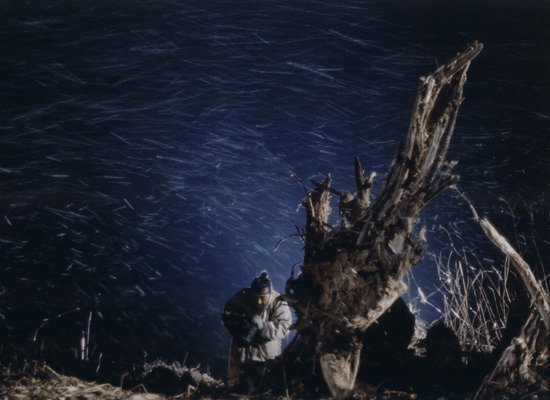
A beautiful and powerful spiritual epic from South Korea (1991), directed by Im Kwon-taek — Korea’s most famous and popular film director, whose filmography runs to 80-odd titles — from an ambitious script by Kim Yong-ok. Covering roughly four decades from the 1860s through the 1890s, the film charts the growth and eventual stamping out of Kae Byok (from which comes the film’s original Korean title), a radically humanist and egalitarian religious sect founded on the belief that God is everyone and everything; in particular it focuses on the sect’s charismatic leader, Hae-Wol (very effectively played by Lee Duk-hwa), who was born a poor farmer, and his three wives. Though closer in some ways to a historical pageant than a conventional narrative, with numerous printed titles inserted at the beginning of various episodes to explain their historical contexts, the film is anything but slow or ponderous (unlike Wyatt Earp, for instance). Composed mainly of short, economical scenes, flurries of action against breathtaking landscapes that stunningly reflect the seasons, this may make more intoxicating use of color than any Asian film I’ve seen since Mizoguchi’s New Tales of the Taira Clan, and the story itself has an epic grandeur worthy of Mizoguchi. Read more
From the Chicago Reader (July 15, 1994). — J.R.
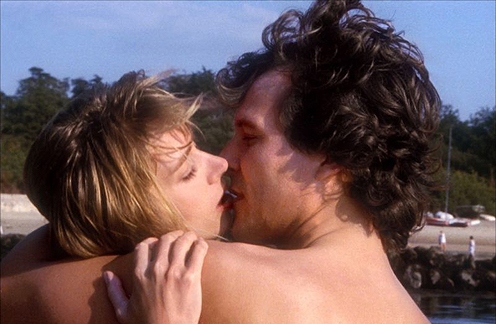
The second installment (1992) in Eric Rohmer’s “Tales of the Four Seasons” centers on a young Parisian woman, aptly called Felicie, who fluctuates between two suitors — a pensive local librarian and the owner of a chain of beauty salons who’s moving to Nevers and wants her and her young daughter to come live with him. But in the back of her mind she’s holding out for the return of a former lover, the father of her daughter, whom she lost track of after they spent a summer holiday together; she accidentally gave him the wrong address when he moved away and she never heard from him again. The conception may be a little too rigorously Catholic for some tastes (including mine), but Rohmer has become such a master of his chosen classic genre — the crystalline philosophical tale of character and romantic choice — that this is a nearly perfect work, in performance as well as execution, with an apposite if ambiguous extended reference to Shakespeare’s A Winter’s Tale in the penultimate act. With Charlotte Very, Frederic Van Dren Driessche, Michel Voletti, and Herve Furic. Music Box, Friday through Thursday, July 15 through 21. Read more
A chapter from Film: The Front Line 1983.
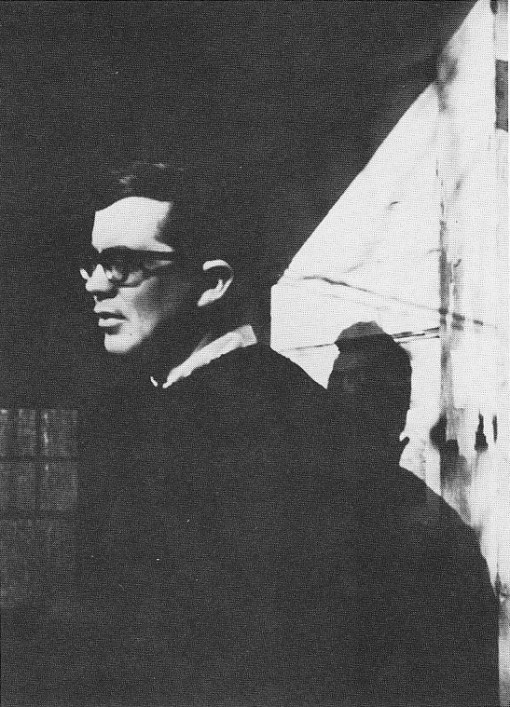

All the major recent films of Robert Breer, an American who spent a crucial decade in Paris (1959-1969), are available in this country. But considering the fact that they’re independent animation, and that Breer is a one-man industry and not a Hollywood studio, they might as well be on the moon. They clearly inhabit a ghetto even more confining than that of the “foreign film,” because most critics lack an apparatus for dealing with them; hence, they find it easier to pretend that these works don’t exist. As uncontroversial as it might appear to be in most contexts, it is probably not irrelevant to note that when one of Breer’s most recent films, the characteristically brilliant Swiss Army Knife with Rats and Pigeons (1980) was screened at a New York Film Festival press show in 1982, it was rudely and audibly (if inexplicably) hissed. And candor compels me to admit that although — perhaps even because — Robert Breer impresses me as the key figure in avant-garde animation, my task in this book would be a good deal simpler if I too could pretend that he doesn’t exist, for the challenge of his work is precisely its capacity to reveal the inadequacy of any criticism that attempts to describe it — the challenge that can often keep the very best new avant-garde work either ignored (the standard journalistic ploy) or dealt with only circumspectly (the standard academic ploy). Read more
From the Chicago Reader (November 15, 2007). — J.R.
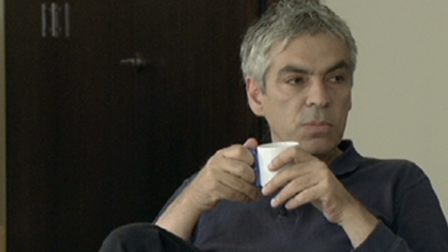
Still Lives: The Films of Pedro Costa Gene Siskel Film Center, 11/17—12/4
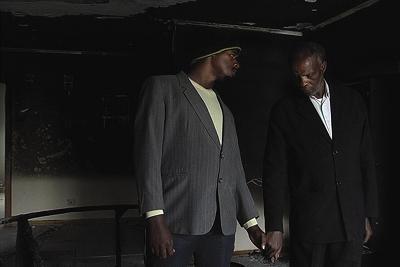
The cinema of Portuguese filmmaker Pedro Costa is populated not so much by characters in the literary sense as by raw essences — souls, if you will. This is a trait he shares with other masters of portraiture, including Robert Bresson, Charlie Chaplin, Jacques Demy, Alexander Dovzhenko, Carl Dreyer, Kenji Mizoguchi, Yasujiro Ozu, and Jacques Tourneur. It’s not a religious predilection but rather a humanist, spiritual, and aesthetic tendency. What carries these mysterious souls, and us along with them, isn’t stories — though untold or partially told stories pervade all six of Costa’s features. It’s fully realized moments, secular epiphanies.
Born in Lisbon in 1959, by his own account Costa grew up without much of a family, and famly life — actual or simulated — is central to his work. All his films are about the dispossessed in one way or another. As the Argentine film critic Quintín puts it, he’s “a cool guy — very rock ’n’ roll” (in fact he was a rock guitarist before he turned to filmmaking). “At the same time,” Quintín continues, he is “quietly telling whoever will listen that cinema is exactly the opposite of what 99% of the film world thinks, and he is getting more radical every day.” Read more
Part of a booklet accompanying a Jim Jarmusch retrospective at the Wexner Center for the Arts at The Ohio State University, October 2001. -– J.R.
A child of the New Wave who spent time at the Paris Cinémathèque, was Nicholas Ray’s personal assistant on Lightning Over Water — and Sam Fuller’s costar in Tigrero [Mika Kaurasmaki] many years later — Jim Jarmusch has loved films even longer than he’s been making them. Signs of this love are fully apparent in his tributes to John Cassavetes, Fuller, and Robert Mitchum, as well as in a recent phone conversation I had with him about his selections of favorite films by others to accompany his own films at the Wexner Center.
J.R.
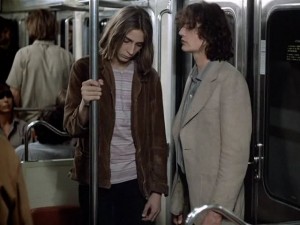
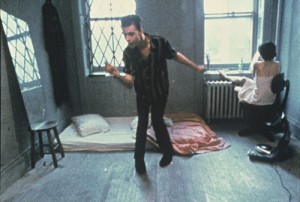
I want to focus mainly on the pairings you’ve come up with. Why, for instance, show The Devil, Probably with Permanent Vacation, your first film?
I don’t really know. I saw The Devil, Probably a long time ago, and I’ve never seen it since. I remember it being about a young guy in Paris who’s suicidal. And it’s [Robert] Bresson. Before I saw this movie, when I used to go to Paris, I’d sit at the end of Île de la Cité, and I think that’s where the film ends. Read more
In the Fray
By Jonathan Rosenbaum
Dec 28, 2001 11:37 AM
Dear David, Roger, Sarah, and Tony,
I’m afraid that going to see Monster’s Ball or Black Hawk Down for the purposes of this exchange isn’t even an option for me. Neither has opened yet in Chicago, and though the first and possibly the second got special screenings for local reviewers willing to go beyond Chicago for their 10-best lists, I feel my first duty is to address what Chicagoans can see in my own list for the Reader. In any case, I’m looking forward to seeing Monster’s Ball because of my liking for Billy Bob Thornton and Halle Berry, but the very thought of going to see any war film for pleasure right now gives me the creeps. Though, come to think of it, I’d probably rather see Black Hawk Down than even think again about Audition, one of David’s favorites — a movie whose view of mankind, including audience members, is for me a lot bleaker than anything found in A.I.
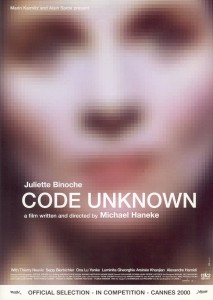
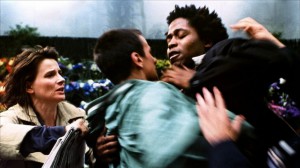
On the other hand, like Roger, I could cite some first-rate movies that exist mainly on television, such as Spike Lee’s A Huey P. Newton Story (which I saw at the Vancouver International Film Festival), even if it’s basically a record of a powerful performance by Roger Guenveur Smith, or Code Unknown, which I saw on the Sundance Channel (where it’s been playing for ages) on Christmas Eve, and which opens here theatrically next week. Read more
From the Chicago Reader (January 4, 2002). — J.R.
There is no such thing as film production. It is a joke, as much as the production of literature, pictures, or music. There are no good years for films, like good years for wine. A great film is an accident, a banana skin under the feet of dogma; and the films that we try to defend are a few of those that despise rules. — Jean Cocteau, 1949
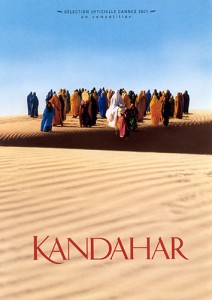
Two events in the year 2001 changed my relation to movies — one public and momentous, the other private and relatively trivial. The public event, of course, took place on September 11, and for many Americans, myself included, it broadened dramatically what we mean when we say “us.” It changed the way we see the world as well as the U.S., and for me the change in the way we see the world was more important. Some of my compatriots may still not be able to move mentally beyond this country, even theoretically; others may be considering the possibility for the first time. I saw better than ever the role movies can play in helping us understand the world from other perspectives, and the sudden outpouring of interest in films about Afghanistan — most notably Jung (War): In the Land of the Mujaheddin and Mohsen Makhmalbaf’s Kandahar — was only the most obvious sign that this is happening. Read more
From the April 3, 2000 Chicago Reader. — J.R.
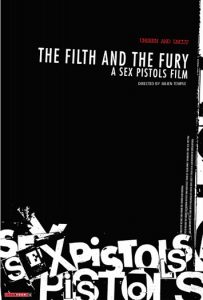
A pretty good English documentary about the 26-month life span of the Sex Pistols, by Julien Temple, who tries to correct some of the false impressions left by his first feature, The Great Rock ‘n’ Roll Swindle, which was made 20 years ago and privileged the role played by the punk band’s manager, Malcolm McLaren. For my taste, this corrected version has way too many clips from Laurence Olivier’s Richard III. I also would have enjoyed more animated material, since what we have is loads of fun. The period ambience (call it funk) is irresistible, but the main points of interest here are sociological rather than musical. 108 min. (JR)
 Read more
Read more
This final chapter in my book Discovering Orson Welles is a lecture delivered in Valencia, Spain, on November 17, 2005, at a conference, “Don Quixote and the Cinema,” held at San Miguel de los Reyes, a convent built during the seventeenth century, making it roughly contemporary with Cervantes’s novel. The same building was used as a prison during the Franco era and functions today as a municipal library, Biblioteca Valenciana.
Given my virtually nonexistent grasp of spoken Spanish, I regretted that the event wasn’t more international; as far as I know, my paper was the only one requiring the services of a translator. The only other non-Spanish participants in the three-day event were a French man and an Italian woman, both of whom seemed to be fluent in the language.
Thanks to the generosity of the conference’s organizer, Carlos F. Heredero (the cowriter of Orson Welles en el País de Don Quijote, cited in my introduction to chapter 15, and an academic scholar and critic whose specialties include Spanish cinema and Wong Kar-wai), I was able to route my trip to Spain through Madrid before the conference and then briefly through Barcelona afterwards. In Madrid I made arrangements to spend three days at the Filmoteca Española looking at the Quixote material mentioned in chapters 19 and 20, but I was severely disappointed to discover that the ten hours I’d arranged to see mainly consisted of material from the TV series Nella Terra di Don Chisiotte and/or bits and pieces of what might be called the wreckage left by Jesus Franco’s disposal of the other footage, not including anything shot in Mexico. Read more
From the Chicago Reader (April 7, 2000). — J.R.
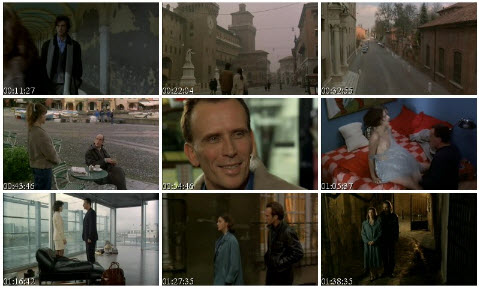
Beyond the Clouds
Rating *** A must see
Directed by Michelangelo Antonioni (with Wim Wenders)
Written by Antonioni, Tonino Guerra, and Wenders
With John Malkovich, Ines Sastre, Kim Rossi-Stuart, Sophie Marceau, Chiara Caselli, Peter Weller, Fanny Ardant, Jean Reno, Jeanne Moreau, Marcello Mastroianni, Irene Jacob, and Vincent Perez.

Chicago has had a plethora of film festivals lately — Women in the Director’s Chair, Polish Movie Springtime, Chicago Latino Film Festival, the Asian American Showcase. This is probably good for filmmakers who want their work shown, but I’m not sure it’s a boon for moviegoers. For one thing, the screening of so many films at once makes it easy for good work to get lost. Billions of dollars are now spent annually making and promoting a few dozen movies — most of them dogs — that the media obligingly make visible and label important, and everything else is consigned to relative oblivion. The most any obscure film can hope for — good or bad, major or minor — is to compete with all the other obscure films. This is tantamount to tripling the number of passengers in steerage without increasing the provisions: more people get to travel, but everyone gets brutalized in the process. Read more
From the Chicago Reader (August 21, 1995). — J.R.
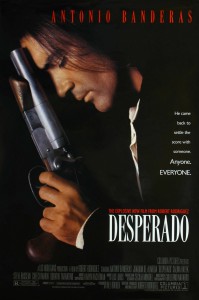
To no one’s surprise but the producer’s, Robert Rodriguez’s bigger-budget spin-off/remake of (and occasional sequel to) his impressive action quickie El mariachi doesn’t stand comparison with its predecessor. On the other hand, Rodriguez is clearly a talent to watch, and there’s plenty to be entertained or impressed by here — fancy, violent action sequences (which gradually develop from barroom shoot-outs to outright war battles); a feisty interaction between hero (Antonio Banderas) and heroine (Salma Hayek) that suggests the influence of Howard Hawks; some enjoyable actorly bits by Cheech Marin, Quentin Tarantino (who’s at least around long enough to tell a funny joke), and Steve Buscemi; an enjoyable villain (Joaquim de Almeida, not a gringo here as he was in El mariachi); a nice Mexican score by Los Lobos; and even a halfway tolerable twist in the plot. What’s mainly missing is the sort of conviction and passion that gave El mariachi its charge; one feels at almost every moment that Rodriguez is fulfilling a contract rather than saying something he has to say. There’s a lot of panache here, but not much inspiration. (JR)
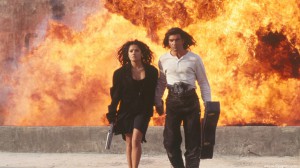 Read more
Read more
From The Guardian (June 6, 2003). Happily, Fei Mu’s 1948 masterpiece is now available on a decent DVD with English subtitles from the BFI, and I’ve recently written a lengthy essay about it for the final issue of the French quarterrly Trafic, to be published in French this fall and on this site in English around the sane time..– J.R.
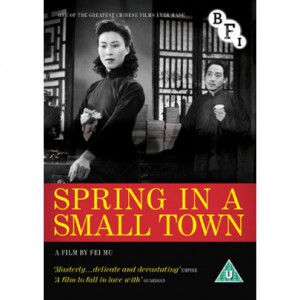
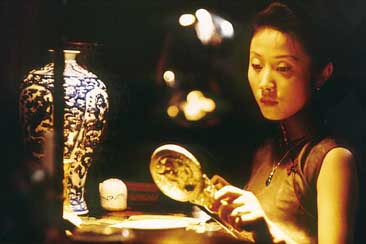
If I had to pinpoint what makes so much of contemporary life intolerable, something I’d call remake mentality might head the top of the list. The mindset that dictates that anything new has to be a recycling of something familiar — that old markets be exhausted before any new ones are contemplated, and that viewers be regarded as mindless brats demanding only more of the same — is so common by now that it has become fully internalised, and not only within the film industry.
The fact that we’re supposed to be looking forward to two sequels to The Matrix in the same year implies that we are fixed marketing units, programmed to relish staying in our well-appointed ruts. But there are just as many spinoffs predicated on our ignorance of the originals, suggesting that the avoidance of fresh thinking may not simply be our own. Read more



























